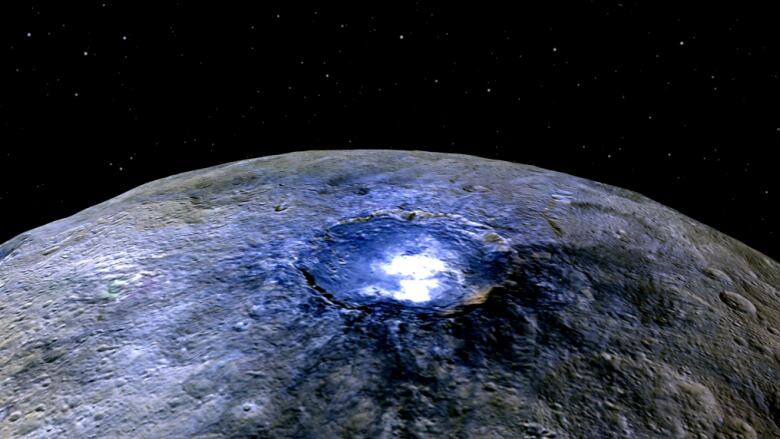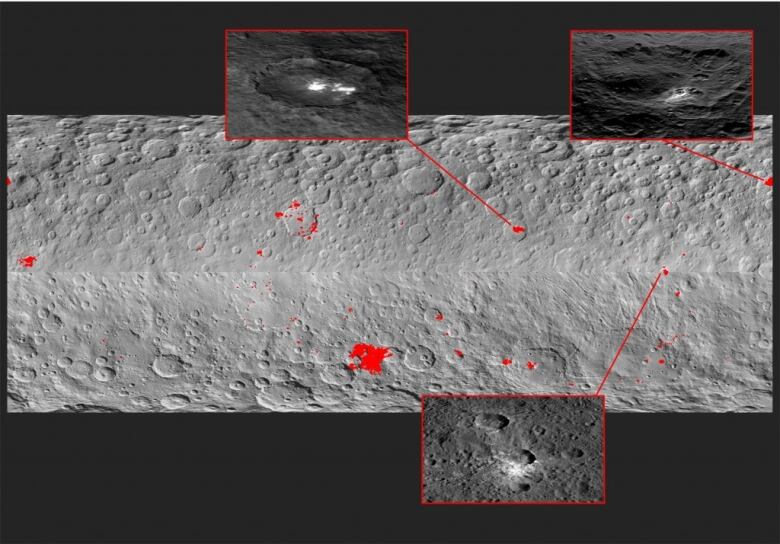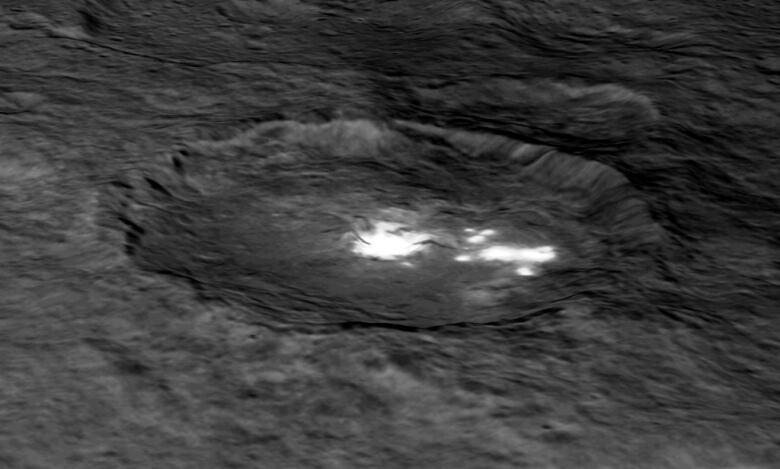Ceres's mysterious bright spots identified as common bath additive
Dwarf planet surprises scientists by being active like a comet and possibly emanating water vapour

Scientists think they've solved the mystery of what causes those weird bright spots on Ceres and have discovered a newsurprise about the dwarf planet.
The bright spots are likely made of a mineral that you might keep ina jar in your bathroommagnesium sulphate,better known to most people as Epsom salts. They're often dissolved in bath water, astheyhave a reputation for helping soothe muscle aches or remove splinters.
"They were kind of the best match of the things we looked at," said Ed Cloutis, a geologist at the University of Winnipeg who co-authored the studypublished today in the journal Nature.
The researchers, led by Andreas Nathues at the Max Planck Institute for Solar System Research in Goettingen, Germany, looked at data from the framing camera aboard the Dawn spacecraft, which has been orbiting Ceres since March.
The data showed that most of Ceres is about as black as fresh asphalt, but there are about 130 bright spots "ranging between the brightness of concrete and that of ocean ice."

The researchers measured the colours reflected by the bright spots, and compared them to the colours of substances that Cloutis tested in his lab.
Cooking a meteorite
Cloutis cautioned that the researchers didn't test all possible white substances, but those likely to exist on Ceres, based on analyses of meteorites that are thought to come from similar planetary bodies.
Ceres, the largest object in the asteroid belt between Mars and Jupiter, is about 950 kilometres in diameter large enough to get heated up to between 100 C and 200 C by the nuclear decay of minerals inside it. (Smaller objects don't have enough "insulation" surrounding their cores to get that warm).

Magnesium sulphate "is one of the things you get a lot of when you cook a meteorite," Cloutis said.
In some images captured by Dawn, researchers also spotted a kind of haze emanating at certain times of the day from the bright spots in a very large depression called the Occator crater. They suggest the haze is caused by water vapour subliming from ice in the crater and picking up some of the minerals with it, which would be a surprising find on an asteroid.
"We think of them as sort of geologically dead bodies," Cloutis said.
The existence of the haze clouds suggests that Ceres is "still geologically alive and we kind of didn't expect that."
The researchers wrote that Ceres is the first large object in the main asteroid belt ever discovered that has "comet-like activity."

"I think it's kind of cool," Cloutis said. "I like the fact that our view of the solar system is that it's a way more dynamic place than we thought it was."
Another paper published in Nature suggests that Ceres may actually be an immigrant to the asteroid belt.
The study led by Maria Cristina De Sanctis of the National Institute of Astrophysics in Rome looked for the chemical fingerprints of other substances on the surface of Ceres, and found lots of minerals containing ammonia. Ammonia is only a stable solid in the very cold temperatures that exist in the outer solar system, beyond Neptune. Because of that, the researchers suggest that Ceres either formed in the outer solar system or came together from small pieces that originated in the outer solar system.












_(720p).jpg)


 OFFICIAL HD MUSIC VIDEO.jpg)
.jpg)



























































































